October 21, 2011
“What nature destroyed, it also preserved.”
The Boston Museum of Science’s new exhibition, “A Day in Pompeii,” provides a multidimensional look at life—and death—in the Roman Empire. It is an impressive display of wall paintings and frescoes, sculpture, implements, furniture, lamps, jewelry, models, videos, photographs, timelines, and activities. Even carbonized food and a loaf of bread. And, yes, there are plaster and resin casts of people and animals who died, preserving their memory forever, in their moment of death.
On the 24th of August in the year 79, the ancient city of Pompeii was destroyed when Mt. Vesuvius erupted and buried the city under 13 to 20 feet of volcanic ash. For 17 centuries it lay hidden until it was accidently rediscovered in 1749. Gradually archaeologists uncovered the remains of the city, much of which had been preserved under the ash. Today, the ruins of many buildings still stand in Pompeii, which is now a UNESCO World Heritage site, visited by 2.5 million people a year.
The touring expedition, “A Day in Pompeii,” will be at the Science Museum through February, before it moves on to Cincinnati, and Denver. Do take advantage of this opportunity to see a glimpse of life in antiquity and learn about art, archaeology, and the science of volcanoes.
Pompeii was a prosperous commercial center of about 20,000 people had been founded in the 6th or 7th century BC, and had been controlled by the Greeks, Phoenicians, Etruscans, and Samites, eventually becoming part of the Roman Empire. A bustling fishing and shipping port, Pompei had a variety of commercial buildings, public spaces, private residences, and cultural buildings, where residents and vacationers enjoyed theater and the arts.
Then, without warning, Mt. Vesuvius put an end to all that. Many residents were able to flee the hot ash, but others were trapped or stayed behind for one reason or another. Hot gases killed many, and, within two days, the city seemed to have vanished.
Underneath all that ash, though, much was preserved, and it is remarkable that we have the opportunity to view it all, almost 2000 years later. The exhibit presents the art, artifacts, and the ghostly images of the dead with respect and the areas are intelligently arranged. Lighting is subdued to protect the artifacts, but it also encourages a contemplative mood. Descriptive information is provided adjacent to each exhibit, and additional background and analysis is available on audio tape, in both child and adult versions.
There is a lot to see and do here, so allow plenty of time for your visit. Here’s a sampling:
Frescos, painted directly on plaster walls, were common in Pompeii. Some of them show daily life in the city: transactions at the marketplace, for instance, others are illustrations from mythology, and some, like the one above, have an erotic theme. It is from Egypt; the river is the Nile. The creatures on either side of the frolicking threesome are crocodiles. A collection of small bowls and containers was decorated with erotic themes is also on display. This was a common theme in Roman art and could be found on household implements and public spaces.
Lead was used for some water containers and pipes because it is a soft metal that can be easily shaped. Today, we know of its toxic effects.
Some of the cooking pots and utensils had a very contemporary look with their simple lines and smooth surfaces. Others were more ornate, and more than one pitcher was decorated with a thumb on the handle, just where one might place one’s own thumb to pick it up.
This small bowl was described as, perhaps, a take-away container for food bought at the thermopolium (fast-food shop). A direct connection to modern culture–except that the clay bowl can be recycled.
Jewelry also had a very contemporary look. These gold necklaces, bracelets, and armlets could easily be worn today.
As today, those who could not afford gold jewelry had other options, such as these glass paste beads.
I found this a particularly intriguing piece, quite unlike anything we might have in our homes today. It is a small bronze piece, about life size, shown here from the back. The ornately decorated hand is associated with the cult of Sabazius, a god of vegetation or reproduction from Asia Minor. Both sides of the hand are rich with symbols. The pinkie and ring finger are bent down and not fully visible in this back view. A serpent slithers over them. There is a set of measuring scales in the middle of the back of the hand, a pine cone, perhaps, balanced on the thumb, and several figures, including a nursing mother and a statue of Sabazius.
There are two video theaters in the exhibit, one showing Pompeii during the eruption of Mt. Vesuvius, beginning with a bright sunny day and ending with fires, ash, and darkness. It is a powerful video, but done in the style of an architectural drawing rather than a more freely animated film. No people or animals are shown, which is probably a good thing, but it gives the video has a certain coldness. It is, however, a very effective presentation of what happened over the two days of devastation.
A second video shows Pompeii as it might have been before the eruption. Neither film is narrated, but this one has titles in English and Spanish. The building shown above thought to be a fish market because of the fish scales found on the ground. This video has the same cold architectural drawing style, but there are people shown in the laundry (where human urine was used as a bleach).
Off to one end of the exhibit (possibly so one can choose to avoid it) is a room full of plaster and resin casts of some of the victims of the volcano. The “sculptures” are not the animals and people themselves, but rather the shapes they left behind them. As the guidebook explains, these are the people and animals who remained behind or decided too late to flee.
“A series of fast-moving pyroclastic surges of scalding moist ash swept the area during the night and early morning, overwhelming the fleeing people.The wet material encased their bodies as and where they fell, and preserved in stark detail facial features, grim expressions, and even the folds of their clothing. Eventually, the bodies of these Pompeians decomposed, leaving an empty cavity in the now-hardened ash.”
Archaeologists found the empty cavities, puzzled at first by what they were. They made plaster casts of the cavities and found these poignant shapes.
The dog, above, was chained and could not escape. There is no misinterpreting his agony in death.
It is thought that this young woman was trying to cover her face with her garments as breathing became difficult.
This group of 32 cast skeletons was found at Herculaneum, a town about four miles from Pompeii, which was also covered in pyroclastic ash. These people were at a boathouse along the shore, trying to escape by sea, but the boats did not come for them. Over 300 skeletons were found along the shoreline.
Another room offers information on volcanoes around the world, types of volcanoes and volcanic rock, and more.
Children and adults get a taste of what is involved in reconstructing archaeological finds when they try to put together broken pottery pieces, separating two or three broken bowls, and accounting for missing pieces.
Another group project encourages people to assemble their own mosaics using traditional patterns.
There is a gift shop too, of course, where you can buy, among other things, a do-it-yourself volcano for the kids, and other scientific and cultural items and books.
There is much more to see and do, and to learn at the Pompeii exhibit.It’s well worth the trip to Boston!
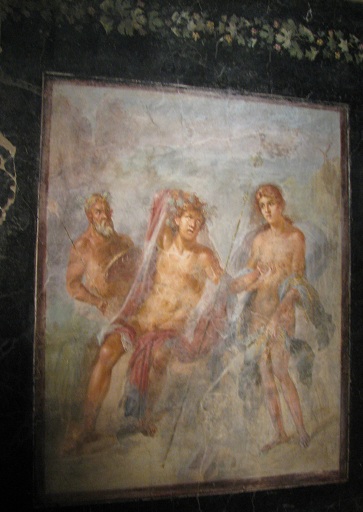
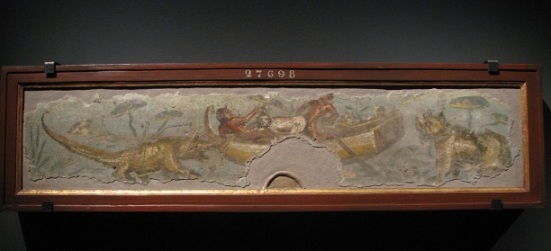

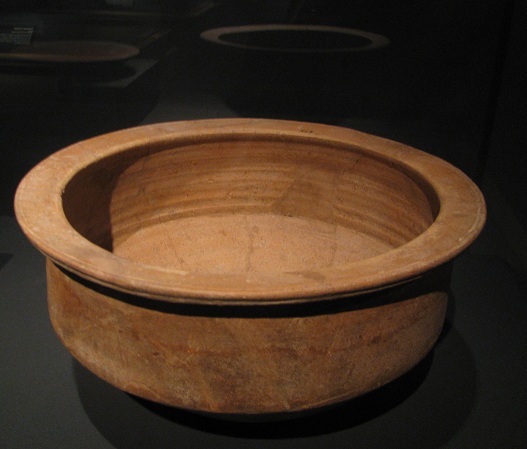
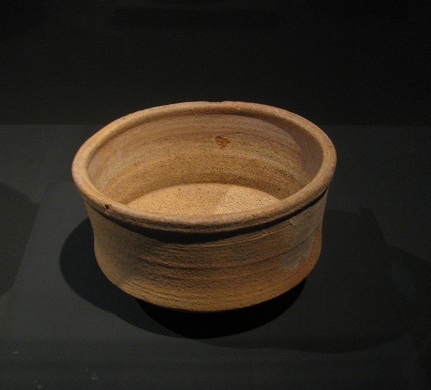
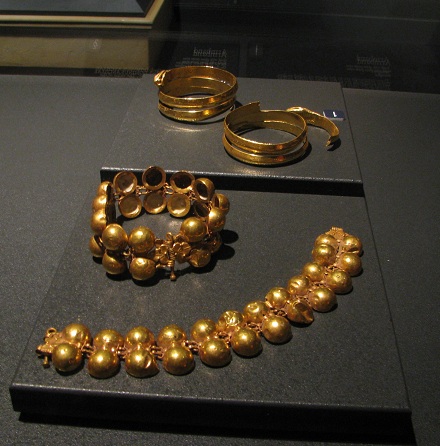
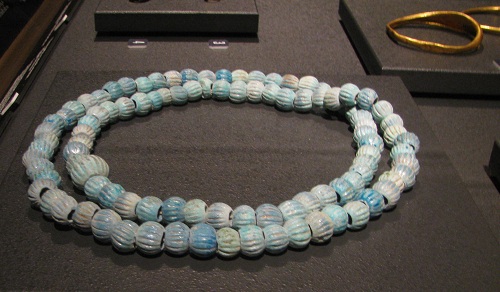
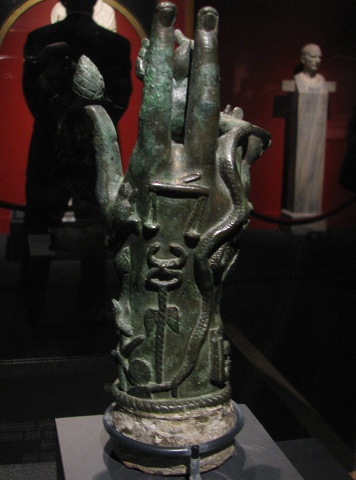

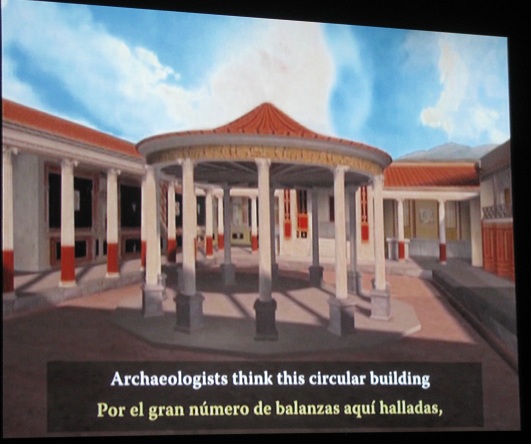
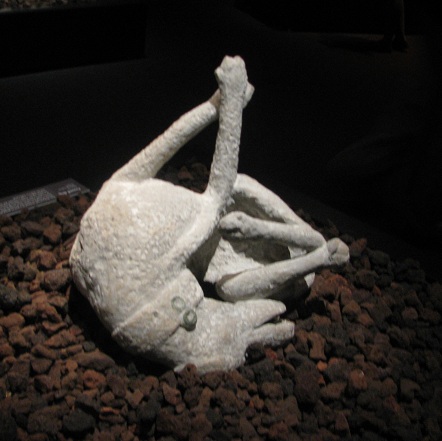
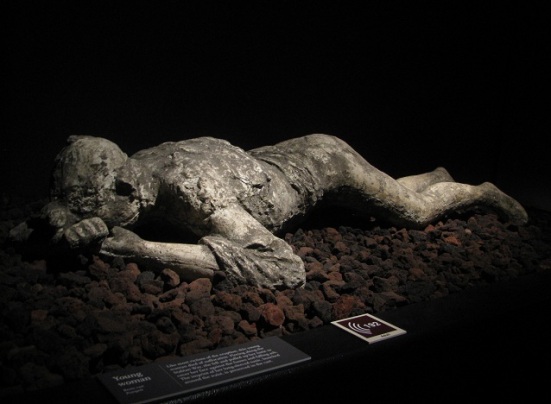
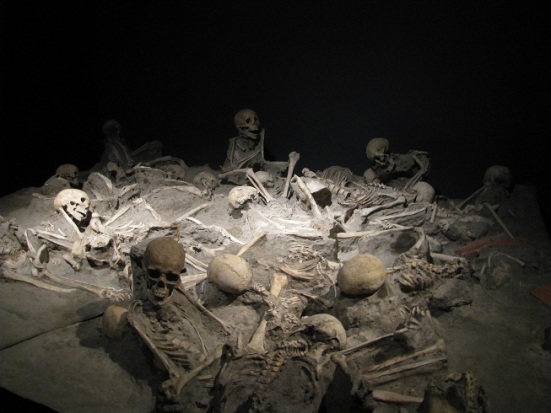
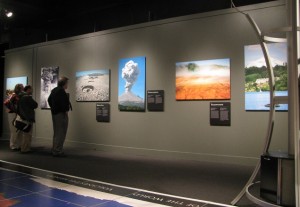
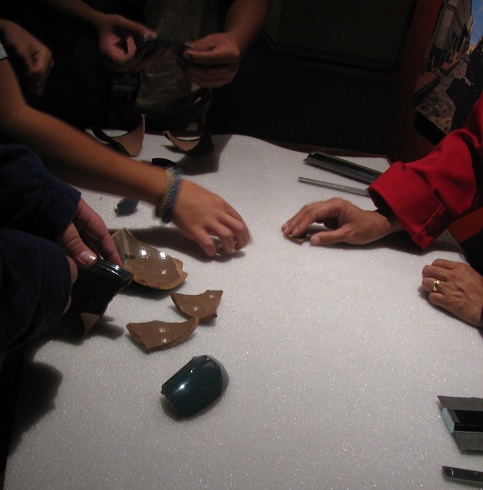
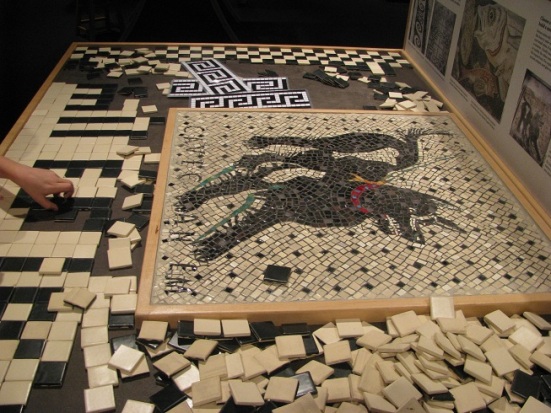
When will the body casts of Pompeii be back?
I don’t know. Perhaps the Boston Museum of Science would know. You can reach them at https://www.mos.org/